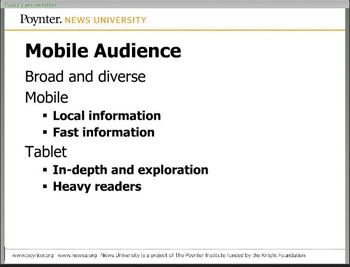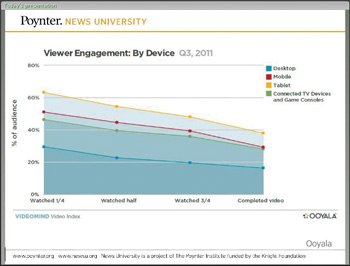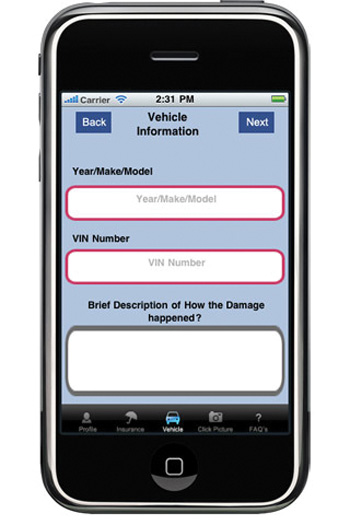 Aaron Marshall of Waukesha, Wis., owns and operates Marshall Auto Body with his father, Scott, who founded the business. The younger Marshall “thought it would be cool” to have a mobile app that simplified the process customers went through to get body work done at their shop.
Aaron Marshall of Waukesha, Wis., owns and operates Marshall Auto Body with his father, Scott, who founded the business. The younger Marshall “thought it would be cool” to have a mobile app that simplified the process customers went through to get body work done at their shop.
So he hopped on Google and located an app developer in India. Why India?
“It was about one-third the cost of getting it done by an American developer,” he said, “and all it took was a phone call and a couple of emails.”
Fix My Crashed Car allows clients to arrange for auto pickup, make rental arrangements, send vehicle damage photos to the shop and get the claims process started.
“Our app allows us to triage the job, set it up and get the repair process started ahead of vehicle delivery,” Marshall says.
With U.S. smartphone adoption still on the rise, Marshall admits the app yields only a few claims a week. But Marshall is well ahead of the curve on this bit of technology. Future gains are far more likely in light of growing smartphone usage worldwide.
“Our website upstages our mobile app with claims coming through it a couple times a day,” says Marshall. “But who knows how many of those Web visits are done on smartphones?”
The Mobile Audience
One of the big reasons why creating a mobile app is worth thinking about is Internet access.
“According to Google, 45 percent of its Internet searches are made from mobile phones,” said Lynn Smith, founder of Shiny New Apps of Minneapolis, a mobile strategy and development shop.
That means your customers can connect with you whether they’re out of the house and on the go or vegging out in front of the TV. It’s a quick-hit. Either they get you and set an appointment or schedule a repair…or they go to your competitor.
Everyone does it. Smartphone and tablet ownership is spread relatively evenly across U.S. income levels, Smith said.
“From 2008 to 2010, the highest growth in smartphone and tablet users was in the $75,000-plus per year households. In 2011, there was a rather large, low-income spurt, in the $15,000 to $35,000 per year households.”
 Another good thing about the mobile Internet audience is that it cuts across all ethnicities. Forty-eight percent of African-American adults have mobile Internet access, while 45 percent of Hispanics do. Whites only account for 31 percent.
Another good thing about the mobile Internet audience is that it cuts across all ethnicities. Forty-eight percent of African-American adults have mobile Internet access, while 45 percent of Hispanics do. Whites only account for 31 percent.
Research from Google’s Thinkmobile service shows that 82 percent of the mobile audience both researches and reads news when they’re connected, while 89 percent stay connected to the Internet as long as their phone is turned on.
Another interesting tidbit Google turned up is that smartphone and tablet users are multi-taskers. Eighty percent use them while they’re watching TV and 40 percent do so every day, raising some interesting marketing possibilities for body shops using both media simultaneously.
Sixty percent checked email, 59 percent searched information related to the programs and 46 percent surfed information unrelated to programming.
“There was an equal split between multi-tasking during programs and during the commercials,” Smith said.
Google also unearthed some numbers about how many smartphone users used their devices while doing something else. Seventy-two percent did so while reading newspapers or magazines; 33 percent did so while watching television; 27 percent while playing video games; 44 percent while listening to music; and 28 percent while viewing the Internet on another device.
 Mobile Primer
Mobile Primer
By the end of this year, 51 percent of all cell phone users in the U.S. are projected to own smartphones. That’s a large slice of the auto owners in the country, considering 87 percent of all U.S. adults own a mobile phone.
What Is a Smartphone?
“A smartphone is any phone that can download and install an ‘app,’ or a mobile phone application,” said Jason Barnett, executive director of The Uptake.com, a Minnesota-based online publication.
“In the first quarter of 2011, there were more smartphones being shipped worldwide than feature phones,” said Regina McCombs, a faculty member of Poynter Institute, a non-profit research institute located in St. Petersburg, Fla. “Smartphone sales are expected to exceed PC sales by the end of 2011.”
Barnett partnered with Smith in a Poynter Institute webinar in early December 2011. Cell phones that are not smartphones are called feature phones. These phones can do a variety of things, such as send and receive email, view the Web and take pictures. They just can’t install an app.
What’s an app? An app is a program designed to run on a smartphone. Apps do all kinds of things: they can be used to monitor bank balances, pay bills, play games, book an auto detailing or repair service, figure when the vehicle will be ready, check on paint colors or pinstriping options – virtually anything you can do on the Web.
More than half of app usage occurs while people are waiting for something or someone.
“People flip through apps looking for quick hits, spending five to 10 minutes per session,” Smith said. “Market research also points to heavy app usage while commuting.”
That means your customer is unlikely to be at home when using a body shop app – but they’re apt to have car care on their to-do list and will see their smartphone app as a way to get one more job out of the way before starting their “real” workday.
In June 2011, Apple claimed to have twice as many apps for its iOS system than the Android App Market featured. At the New Year, Apple claimed it had 500,000 apps in its App Store.
The BlackBerry brought us to the brink of smartphones in 2006. It was the business world’s killer email application – a cell phone that had a camera and could act as a walkie-talkie and send and receive email. It also featured a color screen, Bluetooth capability and GPS functions. Users bought BlackBerrys with applications pre-installed. That has changed. Anyone can upload an app now – prices range from free to a few bucks.
Wi-Fi Wars
In the first quarter of 2007, Apple introduced the iPhone and released it to a hungry public a couple months later. Initially sold exclusively by AT&T, 15 percent of iPhone subscribers had Internet connectivity, plus the ability to choose and install their own applications, in addition to its standard features. In February 2011, Apple announced a deal with Verizon to offer iPhones to its subscribers.
By 2009, 17 percent of all cell phone users had smartphones. In the first quarter of 2011, smartphone users represented 36 percent. First to join the smartphone fray was Verizon Wireless and Motorola with the Droid in 2009. Purchased by Google in August 2011, its Android operating system took the lead in the smartphone market last fall with a 29 percent share, edging Apple’s iOS operating system by 2 percent.
According to a Dec. 5, 2011 comScore mobileLens survey, Google’s Android owns just over 46 percent of U.S. smartphone subscribers. Apple’s iOS devices (iPhone, iPad and iPod) have just over 28 percent of the market, while RIM’s BlackBerry has a 17.2 percent U.S. market share in the No. 3 position.
RIM also set out to retain its market share in 2009 with the BlackBerry Storm. The company was immediately beset with problems in its operating system. It also had a three-day service outage in October 2011.
Despite those setbacks, BlackBerry has an 11.7 percent share in the worldwide smartphone market, according to a Gartner report released in the same month.
Tablets
In October 2011, comScore reported almost 7 percent of all Web traffic originated from a Wi-Fi connection. Nearly two-thirds of that number is smartphones, while “much of the remainder” comes from tablets.
Tablets are larger handheld communication devices that fit somewhere between a smartphone and a laptop. Leading tablet brands are iPad and Kindle Fire. comScore reported the iPad accounts for 97 percent of all the tablet traffic in the U.S. Eight percent of U.S. adults own a tablet.
“Women are more likely to have e-readers, while men are more likely to own tablets,” McCombs said.
Smith said tablet sales will surpass U.S. PC sales by the end of 2012. comScore mobileLens research revealed tablets are used during non-work hours and weekends. Seventy-seven percent of tablet owners use them every day and average 90 minutes per session. That’s a lot of opportunity to put repair information in your customer’s hands.
Fifty-four percent use them to check their email; 53 percent consume the news; 39 percent access social networks; and 30 percent use them for gaming.
iPads have a 10-inch screen, while the Kindle Fire has a seven-inch screen. By contrast, Droid X phones have a 4.3-inch screen, while the Apple iPhone 4 has a 3.5-inch screen.
Tablets should not be confused with another device in the mobile market, the e-reader. Used for reading books and periodicals online, they offer better visibility in bright sunlight and have longer battery life than tablets. Examples include the original Kindle and the Nook.
Shiny New App’s founder Smith said smartphone users and tablet users represent two different kinds of content consumers.
“Smartphone users want local information and fast information,” she says. “Tablet users are far more likely to read in-depth.”
Video is a good experience on a tablet, she said. McCombs agrees. “Our research shows there are far more starts and completions in video when people view them using tablets and other mobile devices.”
 How to Design an App
How to Design an App
The No. 1 consideration when building a cell phone app is to make sure it has “cross platform compatibility.” This means the app designer the body shop contracts with to build the app makes it so that both Android and iPhone users can install it.
Making an app for either the Android or the iPhone alone will significantly reduce the number of people who can be reached. To assure this, app designers should build your apps from a Web language core – preferably HTML 5.
Retool apps for tablet users. “Although the underlying tech is the same,” said Damon Kiesow, senior product manager at Boston.com, “apps need to be redesigned for tablet users.” Kiesow spoke at a webinar on reaching mobile audiences held by the Poynter Institute.
Choose experienced app design and development vendors. Ask potential contractors to show apps they’ve already placed in the iPhone App Store or the Android App Market. If they can’t, find one who can.
It can pay to look for a familiar app developer, though. Check first to see if the Web design firm, PR firm or advertising agency your business contracts with also does app development. “Look for vendors who have done you before,” Kiesow said.
Don’t try to cram everything into a single app. “Do multiple apps.”
Minneapolis-based app developer Lynn Smith of Shiny New App said it’s important to keep the design simple. “Remember, the size of the screens is relatively small. Scale down complexity.”
The app development process is straightforward. “Build. Test. Rebuild. Test. Deploy,” she says. “Usability must be done before you deploy your app. Does the user use it as you intended it to be used?”
To assure this, be sure the design follows industry norms. “For example, the back button is always located at the top on the lefthand side of the screen. It’s user-expected.”
Another app design norm is the search window. Place it at the top of the first screen as well.
Beware of putting too much on the first screen, though. “Drill-down is understood,” said Smith.
More than anything else, she said, monetize apps. “Make sure they’re designed to generate revenue for your enterprise,” Smith advised.
Tablet-Enabled Workflow
Marshall Auto Body has created an innovation to their body shop workflow. Tasks and shop employees are very specialized and compartmentalized. Work is done in bays in which a specific task is carried out with the vehicle then passed along to the next bay, where another specific and compartmentalized task is completed, and so on, until the job is done.
“Each bay runs at 90 minutes to completion,” said Marshall. “Work goes through work cells, with tasks getting handed back and forth between them.”
Though only partially deployed, Marshall said their new workflow management information system will cover all production phases and interface with all their management systems when finished. “With our new system in place, we’ll be able to replace work orders, log time measurements from within the flow line, capture customer and vehicle information, handle procedure changes, even handle employees punching in for work.”
The device that will make all that possible is a tablet, the Samsung Galaxy. They chose the Galaxy over Apple’s iPad for program compatibility.
Marshall is quick to say their program compatibility issues are as likely to originate from his MIS’s coding as the iPad hardware. “But we found the Samsung tablet to be less finicky than the iPad.”
The Galaxy offers many of the same positives the iPad offers. “If you splash it with thinner or filler and it needs replacing, it only costs about $400 to do that.”
Battery life is also good. Advertised at 10 hours, the Marshalls have found it works well with their eight-hour shifts. “And the interface is, in every way, superior to every tablet PC.”













